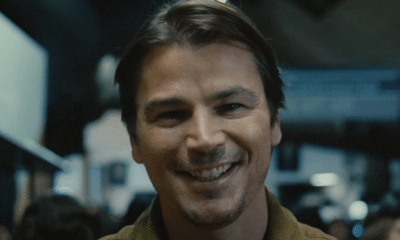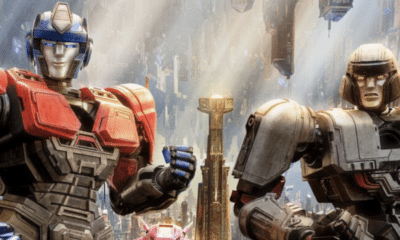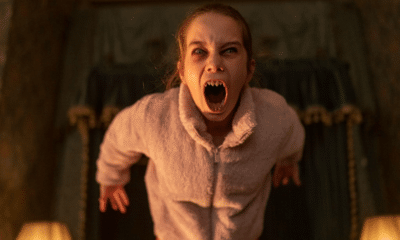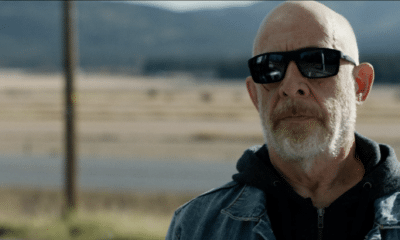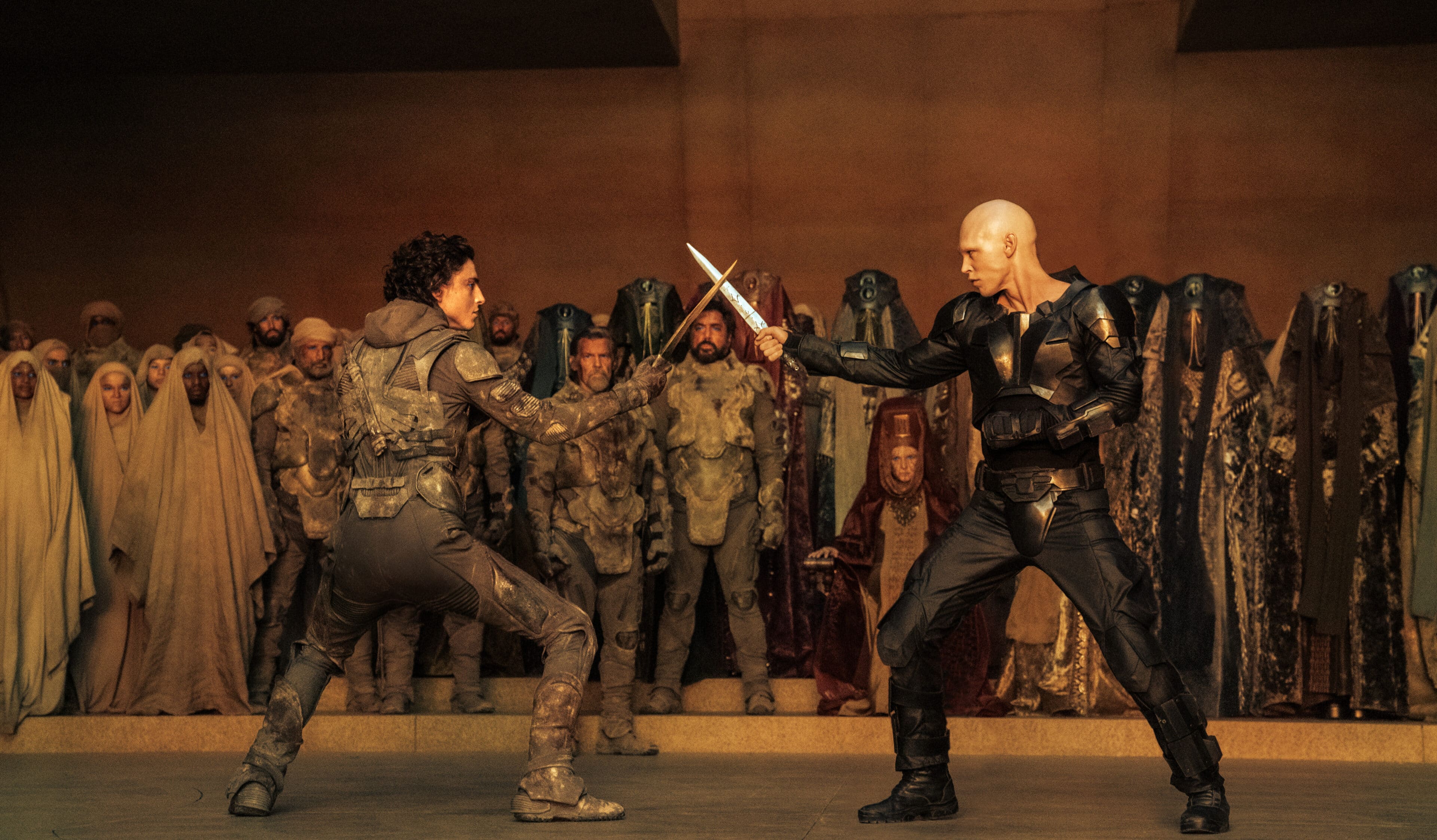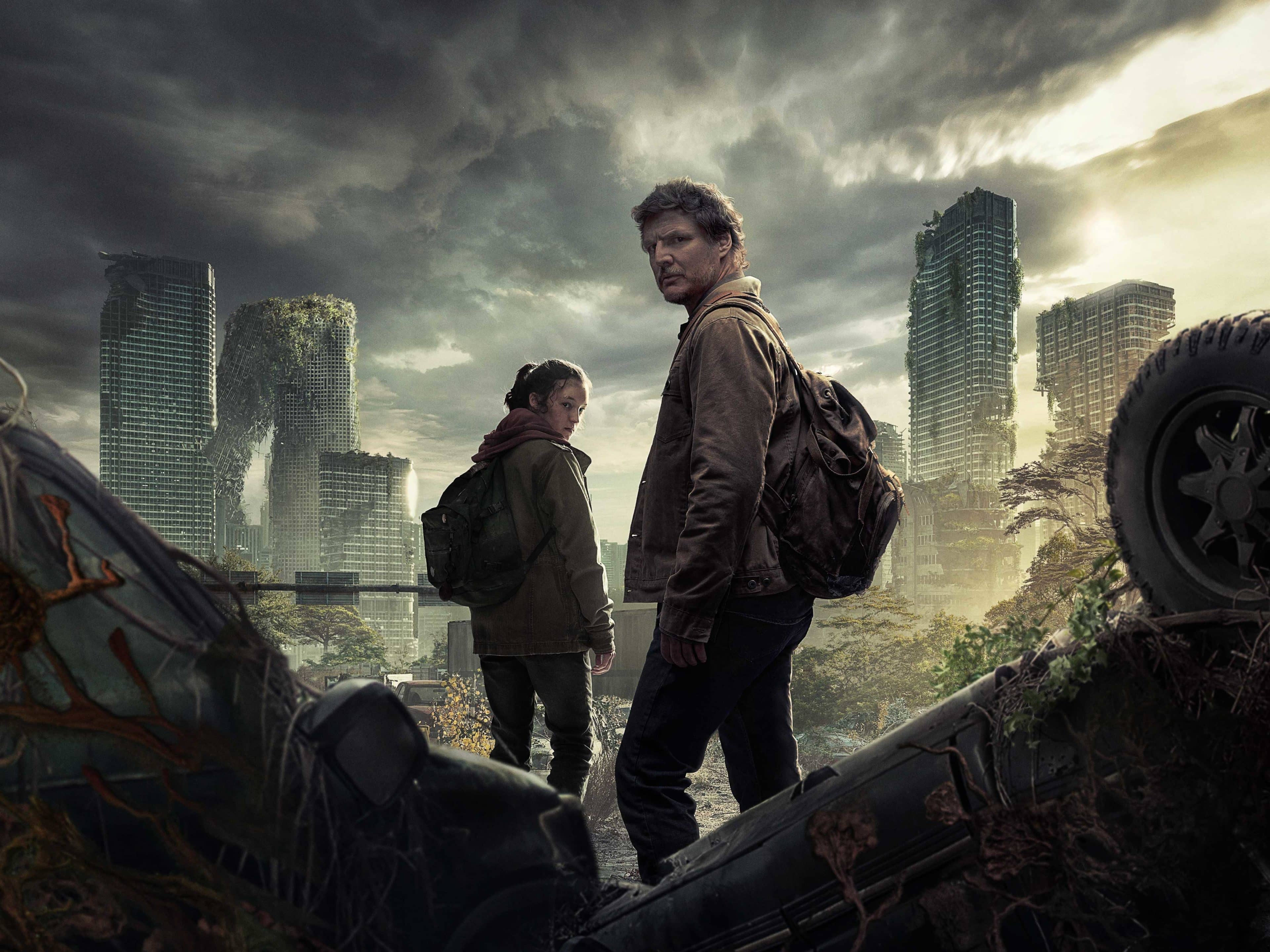Directed by Pixote Hunt, Hendel Butoy, Eric Goldberg, James Algar, Francis Glebas, Paul and Gaetan Brizzi
1999/75 minutes
“Fantasia is timeless. It may run 10, 20 or 30 years. It may run after I’m gone. Fantasia is an idea in itself. I can never build another Fantasia. I can improve. I can elaborate. That’s all.”
– Walt Disney
Unveiled just after the clock struck midnight on Dec 31st 1999, making it the first film to be released in the new millennium (pedantry over the date of the beginning of the millennium notwithstanding), FANTASIA 2000 is a hidden gem of the Disney 53. Admit it, how many of you remember it? In any case, FANTASIA 2000 was the result of almost a decade worth of work; each segment of the film was produced individually, during lulls between major features.
The IMAX Experience
FANTASIA 2000 was the first feature length animated film to be presented in IMAX, but it wasn’t a smooth process; IMAX had to agree to Disney’s terms and conditions in order to get exclusive first showings of the film. These included a limited engagement of 4 months and 50% of the box office receipts. Unfortunately for Disney, not all the IMAX theatres were willing to play by Disney’s rule sheet. Notably, the California Science Center in Los Angeles was one such venue who refused to meet these terms…so Disney went and built a purpose-built IMAX theatre for the 4-month run, costing them $4 million, and demolished it afterwards.
The movie’s segments showcased a number of technical innovations that would later define the studio’s work. Both the Pines of Rome and The Steadfast Tin Soldier were primarily CGI pieces, completed years before TOY STORY.
SYNOPSIS: We open with Beethoven’s Fifth, and an abstract tale of geometric butterflies and bats in a spectral battle of light and darkness. It’s a great opening sequence, much more dynamic than Toccata and Fugue, and giving it an actual story- albeit a rather basic one – improves things further.
Steve Martin appears to bring us up to speed on the concept of FANTASIA. His so-called “comedy” is promptly replaced by violinist Itzhak Perlman. Perlman introduces Pines of Rome by Ottorino Respighi, which sees a family of humpback whales bestowed with the power of flight by the light of a supernova. After pissing off some gulls, the youngster is separated from his parents and becomes trapped in an iceberg, but finds his way out with his mother’s help. As the music reaches its climax, the whales are joined by the rest of their pod, and together they rise higher into the sky, breaching through the clouds.
Quincy Jones and Ralph Grierson introduce Rhapsody in Blue by George Gershwin. Based upon the cartoons of Al Hirshfield, the caricatured characters stand out against the hyper-realistic whales of Pines of Rome. The segment focuses on the lives of four people living in Depression-era New York, and how an innocuous event for one can change the life of the others. Gershwin himself appears in cameo, his caricature at the piano.
INTERESTING INTERLUDE: When Eric Goldberg first approached Hirschfeld about adopting his visual style for the segment, Hirschfeld told him that if he was 50 years younger he would have been on a train the next day to come work on the project. Goldberg subsequently showed “Rhapsody in Blue” to Hirschfeld shortly before the artist’s 96th birthday. Hirschfeld’s wife Louise called it the best birthday present he could have received.
Bette Midler takes a moment to describe a number of pieces that were considered and planned, but failed to make the cut, before introducing the next segment, a long-awaited adaptation of Hans Christian Andersen’s The Steadfast Tin Soldier, to the music of Piano Concerto No.2 in F Major, Allegro, by Dmitri Shostakovich. Like most Disney adaptations, this version has a happy ending, as the eponymous Soldier braves fire and water to win the heart of a porcelain ballerina and defeat an oppressive Jack-in-the-box. It’s one of my favourite pieces, not least for its positive portrayal of the “disabled” Soldier.
James Earl Jones observes animators at work, commenting that their boards have seen the birth of countless beloved characters, before introducing the finale of Camille Saint- Saëns The Carnival of the Animals. “Here the sensitive strains of impressionistic music combine with the subtle artistry of the animator to finally answer that age old question: What is man’s relationship to nature?” He’s handed a note: “Oh, sorry…That age old question: What would happen if you gave a yo-yo to a flock of flamingos?… who wrote this?”
In what is by far the funniest segment, and the shortest, a madcap, yo-yo obsessed flamingo is forced to join in with the dull, ordered dance routines of his fellows, until he finds a way to turn the tables on them.
This segment was originally conceived with ostriches in mind, presumably the ones from Dance of the Hours, by Joe Grant, then 91 years of age and head of story on FANTASIA 2000, and the only crew member to have worked on the original FANTASIA.
After explaining the differences between stage magic and “real magic”, Penn and Teller introduce the only segment held over from the original FANTASIA, the one that started it all, The Sorcerer’s Apprentice, by Paul Dukas. Taken straight from the original film, they even keep the bit where Mickey runs up to Mr Stokowowski to congratulate him…
Mickey then runs to meet up with Stokowski’s successor, James Levine. Everything’s ready for the next number, except Donald Duck is MIA. While Mickey dashes off to find the missing mallard, Levine introduces Pomp and Circumstance – Marches 1-4, by Edward Elgar. Donald and Daisy star as crew of Noah’s Ark during the Great Flood. Featuring more animal cameos than I dare to count- I got to at least 20 – Donald and Daisy are separated when the flood destroys their homestead. Each believing the other to be dead, they carry on their duties whilst missing each other on the gargantuan ship. When the Ark lands (literally), and the animals disembark, Donald and Daisy find each other, and if you don’t well up when Donald does, you’re not human.

Angela Lansbury introduces the final segment, the Firebird Suite (1919 version) by Igor Stavinsky. Loosely based around the eruption of Mount St Helens in 1980, the Firebird is a story of life, death and renewal, as the beautiful young spirit of Spring accidentally awakens the Firebird, who lays waste to the land; encouraged by her compatriot, a silent Elk (perhaps an elder Bambi, or his descendant?), the Sprite begins again, bringing new life to the land. It’s a perfect and appropriate ending to the second FANTASIA and a noble successor to Midnight on Bald Mountain.
Lessons Learned:
1. If you’re going through hell, keep going.
2. Even the smallest action can change everything around you.
3. Donald Duck is a better actor than you give him credit for.
THE HEROES
![]()
Much like the original FANTASIA and the old package films, each segment has their own heroes and villains of varying degrees, making this whole scoring system a bit of a chore. That being said, a couple of characters really stand out for me.
Surprisingly enough, one of them is Donald Duck, who hasn’t seen the limelight in a Disney movie since THE THREE CABELLEROS, half a century earlier. While ostensibly a comedy segment, the dramatic irony and perceived tragedy really brings out some great moments.
Pantomime plays a big part in FANTASIA 2000, notably with Donald and most especially with the Tin Soldier, who unlike Donald manages to carry and convey the weight of the story without resorting to slapstick comedy.
Obviously, Mickey’s in there too, but I talked about him back in January.
THE HEROINES
![]()
For perhaps the first time, Daisy Duck is actually the female lead, rather than just being a sidekick to Minnie Mouse. Playing the straight (wo)man/duck to Donald’s beleaguered beau, she manages to match him at every turn.
The china Ballerina is more of a plot device than a heroine, but much like Jasmine shows enough defiance against the Jack-in-the-box to set her out from your average damsel in distress, but for me the heroine of the film is the woodland Sprite in the Firebird sequence. Cannily, she’s been designed to not look like any one ethnic background, instead looking like a fusion of Caucasian, Asian and Native American, flowing like a wave of life across the barren landscape. Her short story has more emotional punch than a lot of full-length features, notably a lot of the Disney movies that followed it.
THE VILLAINS
![]()
![]()
Only two segments have anything close to an actual villain; the Jack-in-the-box follows a long line of Disney villains in the vein of Gaston and Clayton, and to a lesser extent Frollo; Jackie seems to be in a position of power – mostly due to his dominating size – and much like Gaston and Frollo, as his obsession with winning the Ballerina’s hand escalates, so too do his methods of disposing of the opposition.
HIS FATE? Brandishing a sword and hurling himself at the Tin Soldier, he overbalances and falls into the raging fireplace in a shower of embers.
The Firebird itself, however, is a monster worthy of its lineage; it even references Chernabog in the way it opens its wings before laying waste to everything it sees. While perhaps not a villain as much as a mindless wave of destruction, it certainly shows real malice as it looms over the Sprite.
ITS FATE? Having laid waste to the land, presumably it returns to its slumber; the volcano is still smouldering ominously even while the Sprite begins her work again.
SIDEKICKS AND HENCHMEN
![]()
There are no real henchmen here; a couple of very minor antagonists – the bullying cop and the foreman in the Rhapsody sequence, the other flamingos of the Carnival, but neither of the villains I’ve discussed have anyone else in their employ.
The Elk, appearing at the start of the Firebird to awaken the Sprite, and again to rekindle her own spirit, appears less as a sidekick and more as a confidant, possibly even a consort. I’m probably thinking too deep into it, but perhaps he guards the forest throughout the barren winter months as his lady slumbers.
MUSIC AND SONGS
![]()
![]()
No songs, but the vocals on Pomp and Circumstance, provided by soprano Kathleen Battle, are sublime. As for the rest, what can I say? The Chicago Symphony Orchestra and conductor James Levine are masters of their craft, and the program is considerably lighter and faster than the original FANTASIA. Where some of the original segments came to outstay their welcome after a while, 2000’s sequences come quick and fast, giving you just enough to want more.
PLOT
![]()
Each sequence has its own story, the most complex being Rhapsody in Blue, with the four overlapping storylines slipping back and forth across the city. Pomp and Circumstance engages with the dramatic irony – we know that both Donald and Daisy have survived and are walking the ship in a strong of constant near-misses, an ancient dramatic ploy.
LAUGHS
![]()
In contrast to the rather sombre original, FANTASIA 2000 plays it light, with one segment purely for the LOLs; Rhapsody comes in close second for comedy, while Pomp and Circumstance and the Tin Soldier sequences balance it out with some real drama.
There’s also a lot of ROGER RABBIT-styled meta-humour, as Mickey runs around the auditorium searching for Donald – where the enhanced multi-channel, multi-layered stereo system gave the illusion he was actually running about the theatre behind the audience.
SCARES
![]()
![]()
In Rhapsody in Blue, the little girl drops her ball from a top-floor window, and dives into oncoming traffic to retrieve it. She’s rescued by her parents and everyone goes home safe and sound, but it’s enough to set the heart pounding.
On the other hand, look at this guy.
Seriously, the Firebird scares the bejeebus out of me every time. There’s no introduction, no explanation, just wide and total devastation. Jackie has his moments of malice as well, but the Firebird is truly the stuff of nightmares.
MORAL/ EDUCATIONAL VALUE
![]()
FANTASIA 2000 continues its originator’s mission to bring classical music to the masses, tied with cutting-edge animation, and for the most part, it succeeds. The host segments provide a good, if brief history of each segment, bar one; Beethoven’s 5th isn’t given any introduction bar the opening narration from the original FANTASIA. Each segment has its own story and morals, but there’s a running theme of perseverance – fitting, since it took them sixty years to get around to making this one. From Jobless Joe and Donald Duck to the little lost whale calf, the real moral here is to never give up, even if the world seems to have turned its back on you.
LEGACY
![]()
Hopefully there’ll be another FANTASIA before 2060, but there doesn’t seem to be one on the horizon. Out of the two, I find myself drawn to 2000, not least because it’s half as long, but because I have a lot more fun watching it.
In any case, FANTASIA 2000 served as a testing ground for many of the animation techniques that would be used over the subsequent decade, as Disney began venturing into more esoteric, “experimental movies” such as ATLANTIS: THE LOST EMPIRE and TREASURE PLANET. 2000 had a successful concert run and met with some critical acclaim, though some critics spoke negatively of the use of celebrities, and I can kinda see their point; the movie wouldn’t suffer if you cut out Steve Martin or even Penn and Teller, and a lot of the host segments feel a little stilted. Only Angela Lansbury, bless her, seems to care about the material, while the others just seem to be chasing an easy paycheque…
FINAL SCORE: 44
NEXT TIME: Dinosaur

Latest Posts
-


Film Trailers
/ 15 hours agoM. Night Shyamalan’s ‘Trap’ trailer lands
Anew experience in the world of M. Night Shyamalan.
By Paul Heath -


Film News
/ 1 day agoFirst ‘Transformers One’ teaser trailer debuts IN SPACE!
The animated feature film is heading to cinemas this September.
By Paul Heath -


Film Reviews
/ 1 day ago‘Abigail’ review: Dirs. Matt Bettinelli-Olpin & Tyler Gillett (2024)
Matt Bettinelli-Olpin and Tyler Gillett direct this new horror/ heist hybrid.
By Awais Irfan -


Film Trailers
/ 1 day agoNew trailer for J.K. Simmons-led ‘You Can’t Run Forever’
A trailer has dropped for You Can’t Run Forever, a new thriller led by...
By Paul Heath









